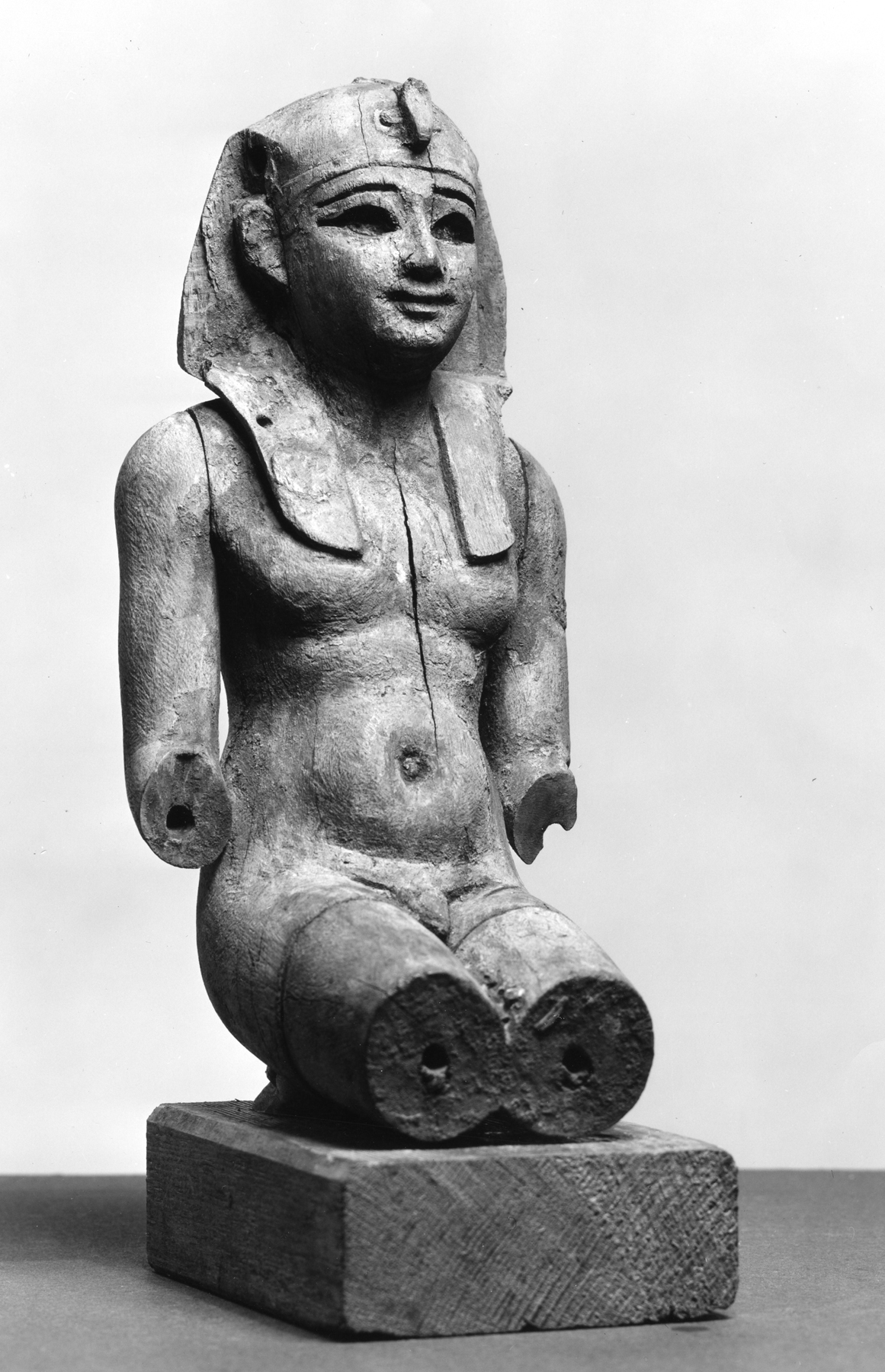Torso of Harpokrates
(Ancient Egypt and Nubia )
The nude boy wearing a royal headdress with the uraeus represents the child god of kingship Harpokrates, which means "Horus the Child." The figure was made from several pieces of wood and once had inlayed eyes and brows made of precious materials. Originally, it was part of a group showing him seated on the lap of his mother, Isis.
The piece has a hole in the top of the figure's head. There are dowel holes at the elbows and knees. The arms and legs are missing, and the upper arms and thighs are doweled on.
Provenance
Provenance (from the French provenir, 'to come from/forth') is the chronology of the ownership, custody, or location of a historical object. Learn more about provenance at the Walters.
Navare, Paris, [date and mode of acquisition unknown] [said to be from Beni Suef]; Henry Walters, Baltimore, 1929 [mode of acquisition unknown]; Walters Art Museum, 1931, by bequest.
Exhibitions
| 2004-2005 | Carved for Immortality. The Walters Art Museum, Baltimore. |
Conservation
| Date | Description | Narrative |
|---|---|---|
| Examination | examined for condition |
Measurements
H: 9 3/8 in. (23.89 cm)
Credit Line
Acquired by Henry Walters, 1929
Location in Museum
Not on view
Accession Number
In libraries, galleries, museums, and archives, an accession number is a unique identifier assigned to each object in the collection.
In libraries, galleries, museums, and archives, an accession number is a unique identifier assigned to each object in the collection.
22.7


